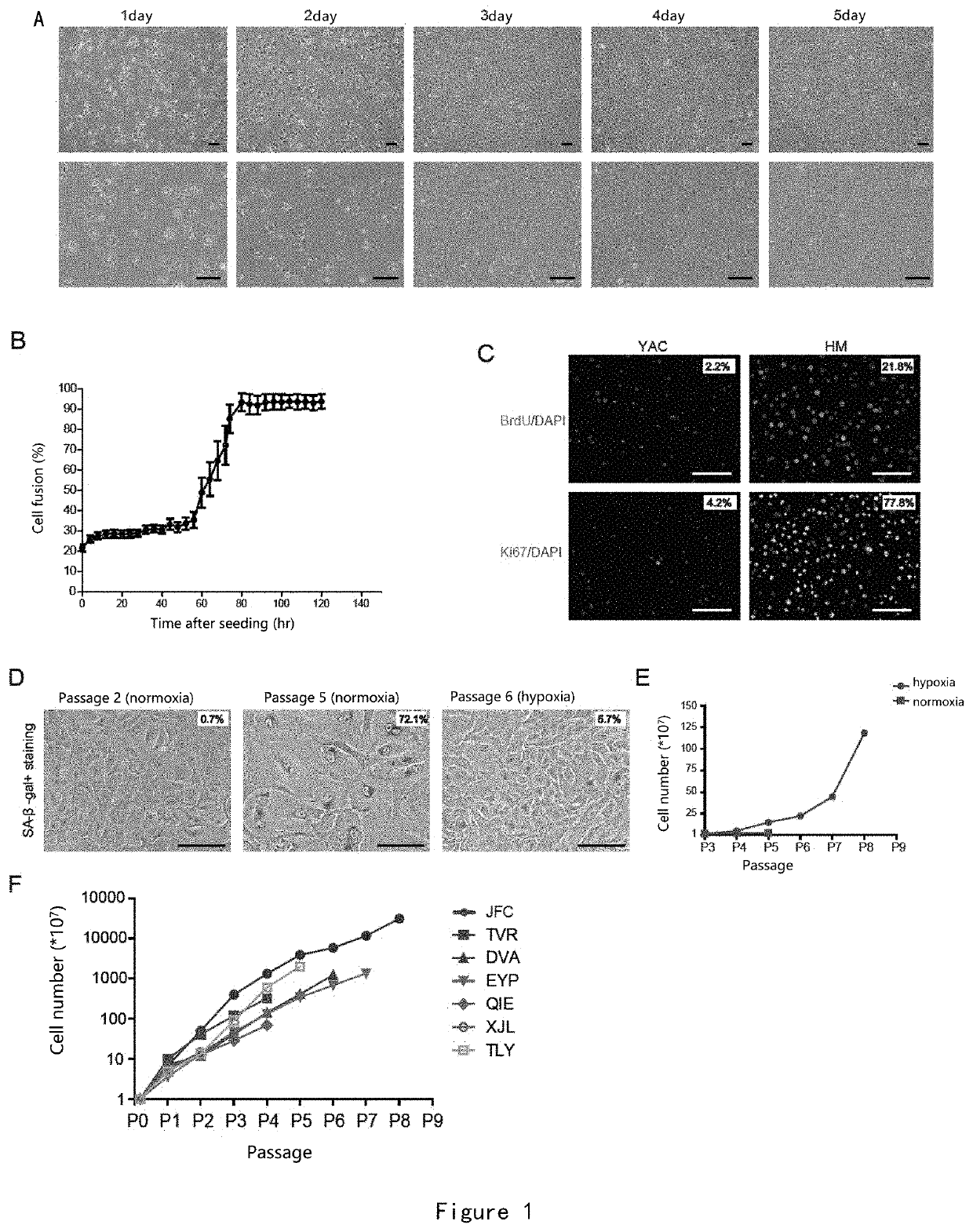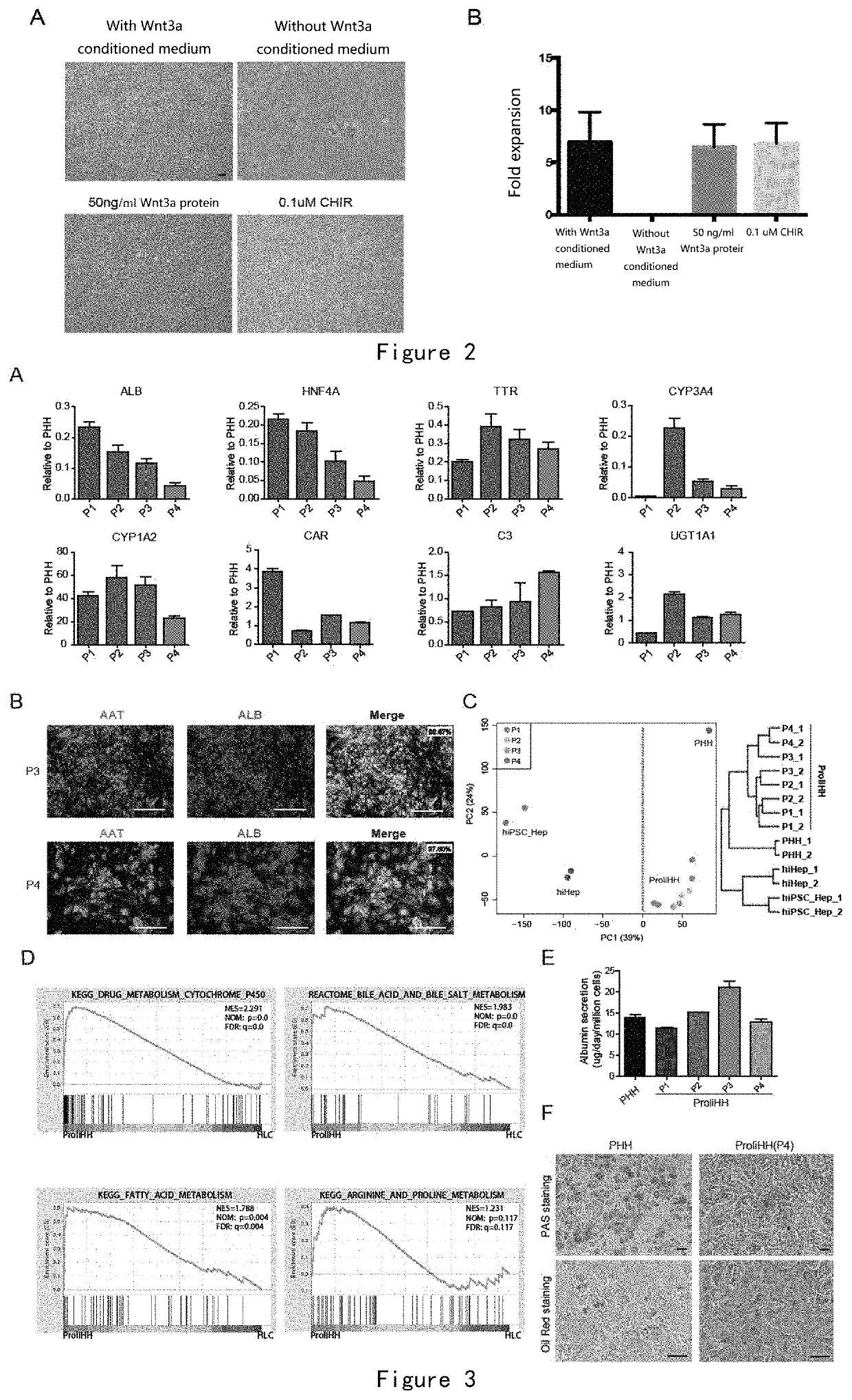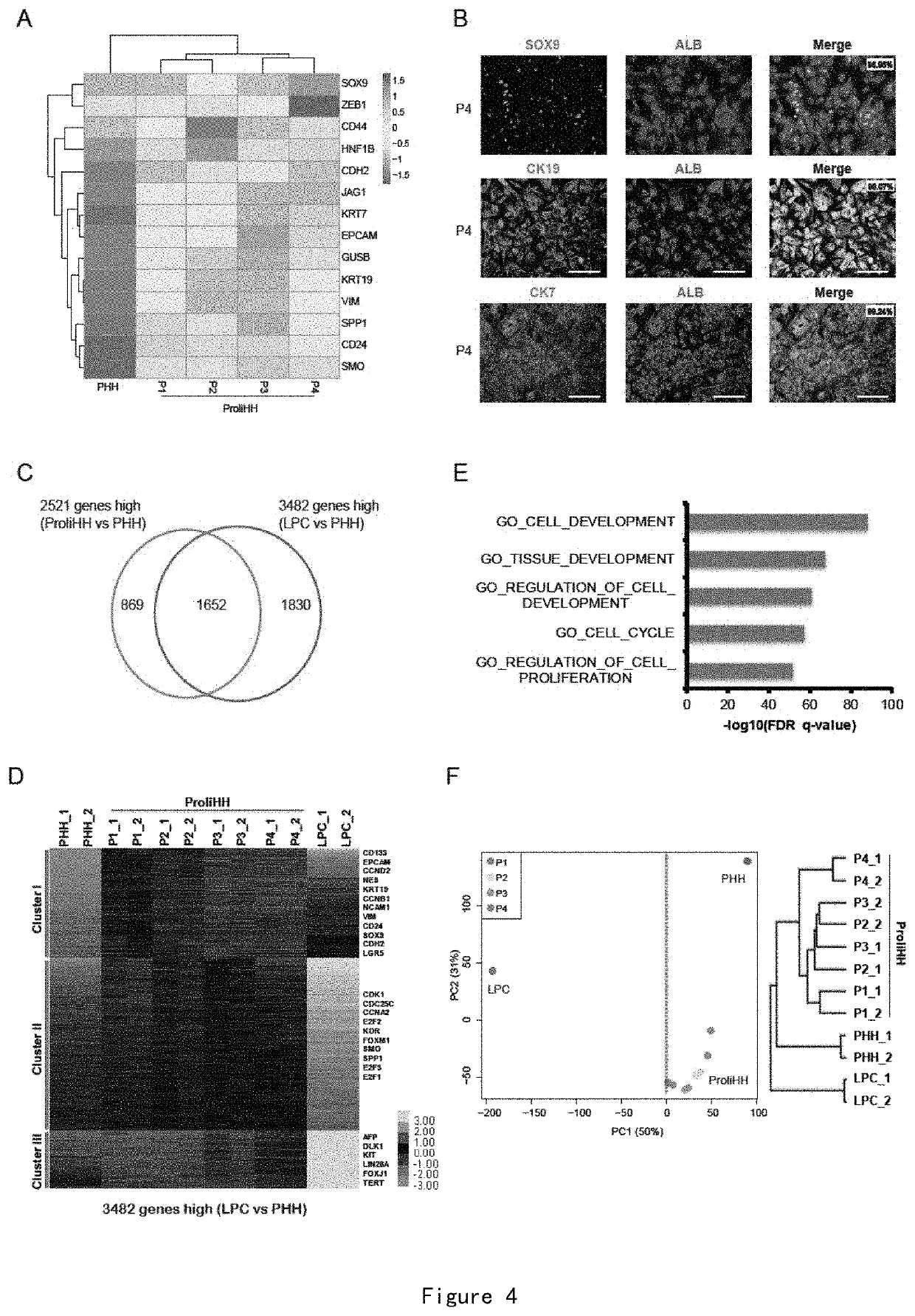Method for Expanding Hepatocyte in Vitro and Application
a hepatocyte and in vitro technology, applied in the field of biotechnology, can solve the problems of limited clinical application, limited hepatocyte transplantation, and no experiment to prove that they can regenerate (repopulate) in the liver, and achieve the effects of increasing the capacity of cyp2b6 and low expression
- Summary
- Abstract
- Description
- Claims
- Application Information
AI Technical Summary
Benefits of technology
Problems solved by technology
Method used
Image
Examples
example 1
Combined with Hypoxia can Promote the Long-Term Expansion of Human Hepatocytes In Vitro
[0167]Through the selection and optimization of the medium components, the inventor obtained a medium that can promote the expansion of human hepatocytes in vitro, and named it HM medium. The human hepatocytes were plated on a 6-well plate at 1*105 cells / well, and HM medium was added for culture. By real-time observation in the live cell workstation, it can be found that human hepatocytes undergo epithelial cell-mesenchymal transformation on the second day, followed by massive proliferation from the second day to the third day (FIG. 1A and B). On day 3, it was found that 80% of the cells were Ki67 positive, and a BrdU incubation for 3 hr showed that 20% of the cells were at the replication phase (FIG. 1C). In YAC, a medium previously reported to induce the proliferation of mouse hepatocytes, human hepatocytes rarely proliferate and replicate (FIG. 1C).
[0168]The expanded human hepatocytes were seri...
example 2
Necessary for HM Medium to Promote Hepatocyte Proliferation
[0170]The HM medium contains a variety of growth factors and small molecule compounds. The inventor has found that removal of Wnt3a conditioned medium prevented the proliferation of human hepatocytes (FIGS. 2A and B).
[0171]When Wnt3a conditioned medium was replaced by 50 ng / ml Wnt3a purified protein or Wnt signaling pathway agonist CHIR (0.1 uM), human hepatocytes could be expanded, and showed similar cell morphology and expansion fold (FIG. 2A and B).
[0172]The above results prove that the Wnt signaling pathway agonist is critical in the HM medium for the proliferation of hepatocytes, and the Wnt signaling pathway agonist can be Wnt3a conditioned medium, an agonist protein or small molecule of the Wnt signaling pathway.
example 3
ferating Human Hepatocytes Maintain Some Function of Mature Hepatocytes
[0173]Mature hepatocyte genes were expressed in HM-cultured human hepatocytes but at different levels from primary human hepatocytes (PHH, freshly resuscitated primary human hepatocytes, uncultured). ALB, HNF4A, TTR, and CYP3A4 were expressed at lower levels than those of PHHs, and CYP1A2, CAR, C3, and UGT1A1 were at similar levels or higher levels than those of PHHs (FIG. 3A). As validated by immunofluorescent staining, over 97% of proliferated human hepatocytes (ProliHHs) expressed mature hepatocyte marker proteins ALB and AAT (FIG. 3B). To analyze the level of the hepatocytes gene expression of ProliHHs, the inventor compared PHHs, ProliHHs and hepatocyte-like cells derived from embryonic stem cells by differentiation and from fibroblasts by transdifferentiation (HLCs; hepatocyte-like cells derived from embryonic stem cell by differentiation and from fibroblasts by transdifferentiation) for the difference in t...
PUM
| Property | Measurement | Unit |
|---|---|---|
| concentration | aaaaa | aaaaa |
| volume | aaaaa | aaaaa |
| pharmaceutical composition | aaaaa | aaaaa |
Abstract
Description
Claims
Application Information
 Login to View More
Login to View More - R&D
- Intellectual Property
- Life Sciences
- Materials
- Tech Scout
- Unparalleled Data Quality
- Higher Quality Content
- 60% Fewer Hallucinations
Browse by: Latest US Patents, China's latest patents, Technical Efficacy Thesaurus, Application Domain, Technology Topic, Popular Technical Reports.
© 2025 PatSnap. All rights reserved.Legal|Privacy policy|Modern Slavery Act Transparency Statement|Sitemap|About US| Contact US: help@patsnap.com



